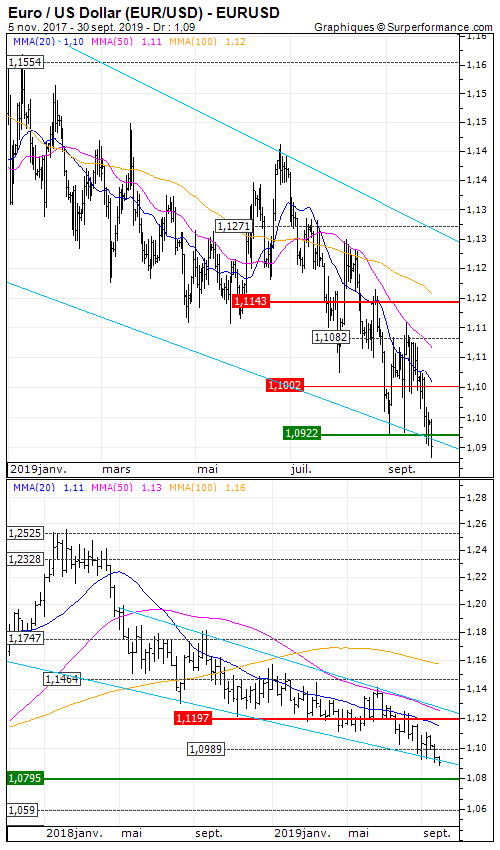Euro / US Dollar (EUR/USD) : EDF/ECB, the big gap
By Mathieu Burbau
Despite a decline in political risk in Italy and the United Kingdom, where deputies have returned to their headquarters in Westminster, the flagship pair in the foreign exchange market is struggling to recover. The latest PMI indicators first confirmed the very poor health of the manufacturing sector in Germany (lowest since 2008) and in the Euro zone (lowest level in 6 years). Then inflation in Germany went down significantly by slowing to only 1.2% year-on-year in September (compared to +1.4% in August and +1.7% in July).
Aware of the situation, the ECB had, since its meeting on 12 September last, accompanied by its new package of measures with a call to States to act more effectively. Chancellor Angela Merkel does not seem to be very inclined to return to a budget that is deficient in nature to support the Ten-Nine engine. Philip Lane, Chief Economist of the Monetary Authority, is trying to reassure by stating that Frankfurt still has a margin to lower rates. In contrast, in the United States, the FED projections do not foresee any further rate cuts, either in 2019 or 2020. The US central bank has even slightly raised its growth forecast for this year Graphically, the Euro continues its slide by recording new lows since May 8, 2017 under 1.09 USD, the greenback being also supported by end-of-quarter adjustments. We now expect a technical reaction that could send prices back to a resistance of 1,1002 or even 1,1143 USD, and we therefore maintain a clear preference for rebound sales. The single currency could then address the gap that had been caused by the results of the first round of the French presidential election more than two years ago, and move in the direction of USD 1.0727.



